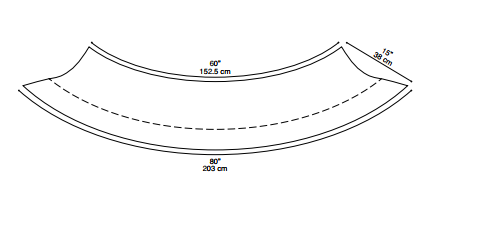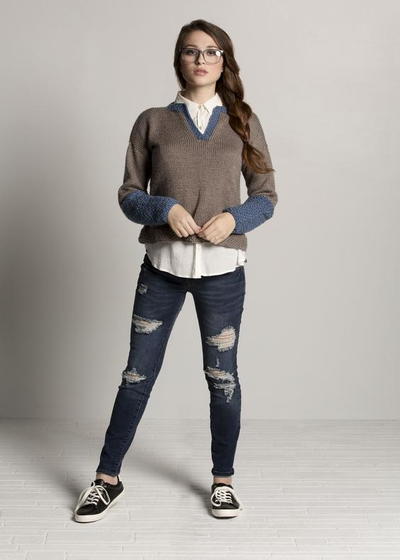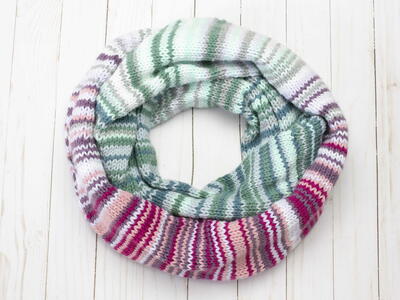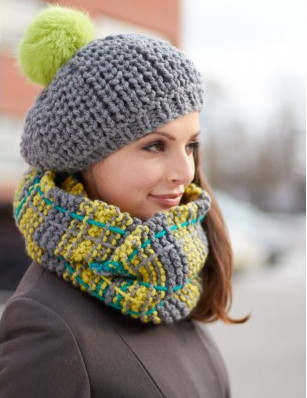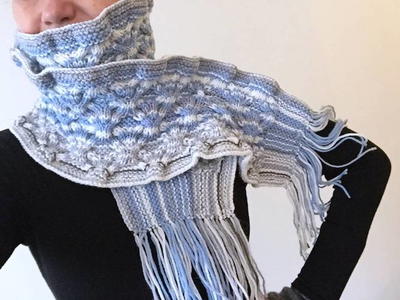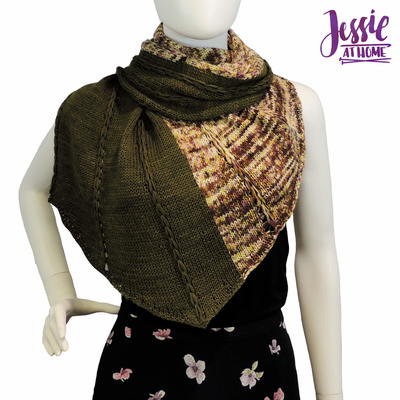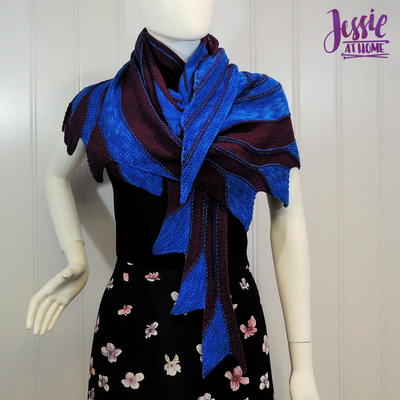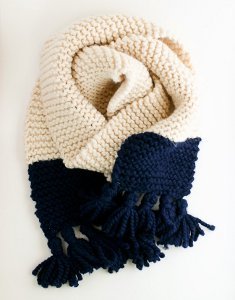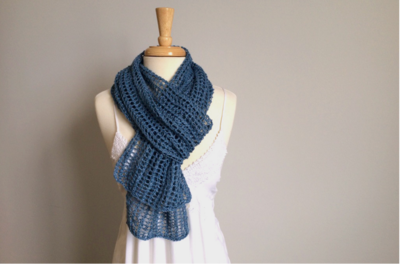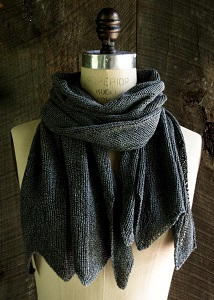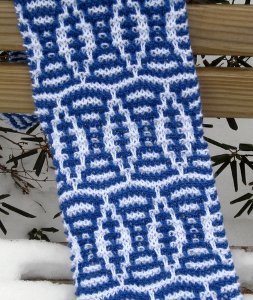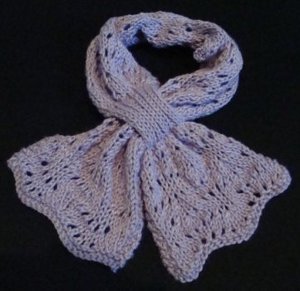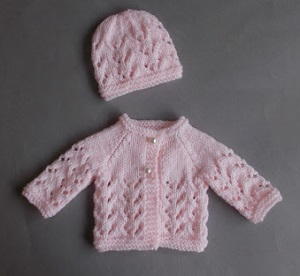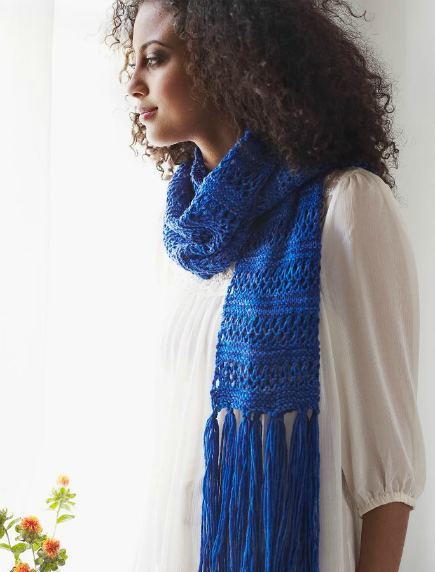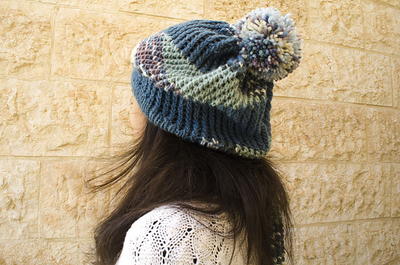Souffle Wrap
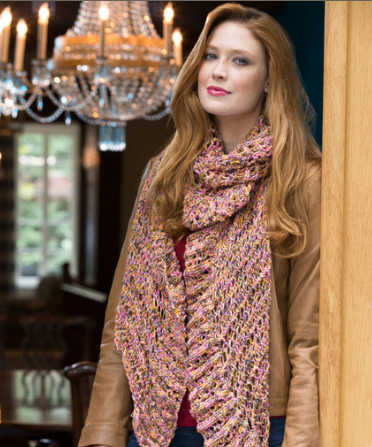
Learn how to knit a scarf and add a bit of French flair to your wardrobe with the Souffle Wrap. This easy knit scarf pattern produces a gorgeous scarf just as light and fluffy as its namesake. With only a couple of new patterns included, this easy-to-follow free scarf pattern is great for the beginner knitter looking for just a little more out of their scarf knitting projects. The chosen multicolor yarn makes this knit scarf able to go with almost any outfit. Don't confine this great beauty to just the chilly months. The light, lacy design makes it the perfect accessory all year long.

Knitting Needle Size10.5 or 6.5 mm, 11 or 8 mm, Circular Knitting Needles
Yarn Weight(4) Medium Weight/Worsted Weight and Aran (16-20 stitches to 4 inches)
Gauge1 stitches, 2 rows, 3 inches. stockinette stitch
Instructions:
Materials:
- RED HEART® Shimmer®: 2 balls 1949 Kaboodle (Art. E763 available in 3.5 oz (100 g), 280 yd (256 m) and multicolor 3 oz (85 g), 240 yd (220 m) ball)
- Susan Bates® Circular Knitting Needles: 6.5mm [US 10.5] 36” long and 8mm [US 11] 32” long
- Stitch markers
- Yarn needle
Shawl measurements: 63” long x 19” [160 cm x 48 cm] wide (lace section); 80” [203 cm] long (ruffle section). One size fits most women.
To make a larger size shawl, add more Lace Pattern rows.
Abbreviations:
cm = centimeters
K = knit
mm = millimeters
P = purl
RS = right side
* = repeat whatever follows the * as indicated
WS = wrong side.
Special Stitches:
K2tog = Knit 2 stitches together. Insert the right needle into two stitches at the same time and knit. This will result in a decrease of one stitch. This decrease will slant to the right.
SSK = Slip next 2 stitches, one at a time as if to knit, to right needle, insert point of left needle through front of sts, knit these sts together through back loop.
YO = Yarn over. Make a new stitch by wrapping the yarn over the right-hand needle.
Sl 1 kwise = Slip 1 knitwise. Insert the right needle into the next stitch on the left needle as if you were knitting the stitch. Pull this stitch off the left needle. The stitch is now on the right needle and twisted.
NOTES:
- Shawl is worked back and forth in rows. Circular needle is used to accommodate large number of stitches. Do not join.
- Use 2 different balls or the two ends from one ball to cast on using long tail method. Make a double slip knot to start - this will NOT count as two stitches, it will be removed when you knit the first row. At the end of the first row, pull the slip knot off the needle and undo it.
- When you have cast on all stitches, cut one of the tails, leaving one which will become the working yarn.
- Place stitch markers every 50 stitches. This makes it easier to count your stitches as you cast on.
- Place a stitch marker to indicate the right side of your work as you will have tails at both ends
RUFFLE PATTERN (multiple of 6 + 2)
Row 1 (Right Side): Slip 1 knitwise, *k1, yo, k2tog, k1, p2* repeat from *to* across row to last st, k1.
Row 2: (Wrong Side): Slip 1 purlwise, *k2, p4* repeat from *to* across row to last st, p1.
Row 3: (Right Side): Slip 1 knitwise, *k1, k2tog, yo, k1, p2* repeat from *to* across row to last st, k1.
Row 4: Repeat row 2.
LACE PATTERN (multiple of 5 + 2)
Row 1 (Right Side): Slip 1 knitwise, *k2tog, yo, k1, yo, ssk* repeat from *to* across row to last st, k1.
Row 2: (Wrong Side): Slip 1 purlwise, purl to end of row.
SHAWL
Using smaller size needle, cast on loosely 428 sts (do not count double slip knot) use suggested method described under NOTES.
First Row (Wrong Side): knit across. At end of row, pull double slip knot off needle and undo — 428 sts.
Right Side: Begin 4 row Ruffle Pattern, starting with Row 1. Repeat these 4 rows for a total of 16 rows.
Change to larger size needle and begin decrease rows
Row 1 (Right Side): Slip 1 knitwise, *k4tog, p2tog*, repeat from *to* across row — 144 sts.
Note: K4tog stitches may be tight, loosen stitches as you continue to work. Remove stitch markers if still in place.
Row 2 (Wrong Side): Slip 1 purlwise, k2tog, *k1, p1*, repeat from *to* across row to the last 3 sts, k2tog, p1 — 142 sts.
Next Row: (Right Side): Work 2 row Lace Pattern until total length is approx. 19” [48 cm], end with row 2.
Next Row: Knit.
Next Row: Knit.
Next Row: Bind off loosely all sts.
FINISHING
Using yarn needle, weave in ends
Diagram
Read NextBeginner Lace Stripe Scarf
astoirin
Dec 08, 2019
I am working on this pattern - however the 'decrease rows' make no sense. The directions are Row 1 (Right Side) Slip 1 knitwise, k4tog, p2tog, repeat from to across row 144 sts. However, when I do this I end up with 84 stitches - not 144. Can you please explain what I'm doing wrong? Thanks.
Lisa
Dec 11, 2019
I suggest double checking your decreases, you start with 428 stitches, slip 1, leaves 427 stitches, divide that by 6 stitch pattern repeat for the row comes out to 71.1666667, times this by 2 brings you to 142.333333, which is 143 plus the stitch you slipped brings the total to 144 on the needles. For each pattern repeat this row, you are using 6 stitches to make 2 stitches, it might be helpful for you to go back to the row of 428 stitches and place markers every 6 stitches after the slip one, after this row you should have just 2 stitches between each marker, based on what you have said here, I believe you have done too many knit 4 together and it has thrown your decrease stitch count off.
Tricia108
Dec 24, 2017
I love the look of this pattern. It does not look difficult. The most difficult part will be casting all those stitches on. Shawls are always welcome. I prefer knitting with circular needles but practice is always good. Thank you for the free pattern.
edrieirvine
Aug 11, 2015
This looks like the perfect scarf using some yarn in my stash. But I have a question about the "double slip knot" referenced in the notes. Could you please provide more info on what you mean? All the references to such a knot that I can find don't appear to be related to knitting, and certainly not to casting on. Thanks! (had to enter a rating so gave it a 3 until I can get more info.)
aelizjohnson 37863 57
Nov 14, 2016
the double slip is because you are using two strands of yarn, therefore you would be making two slip knots at the cast on (one for each strand).
Lisa
Dec 31, 2018
The double slip knot is being used to create a firmer cast on in the first stitch, at the end of the first row it is being removed by undoing the knot.
Report Inappropriate Comment
Are you sure you would like to report this comment? It will be flagged for our moderators to take action.
Thank you for taking the time to improve the content on our site.

